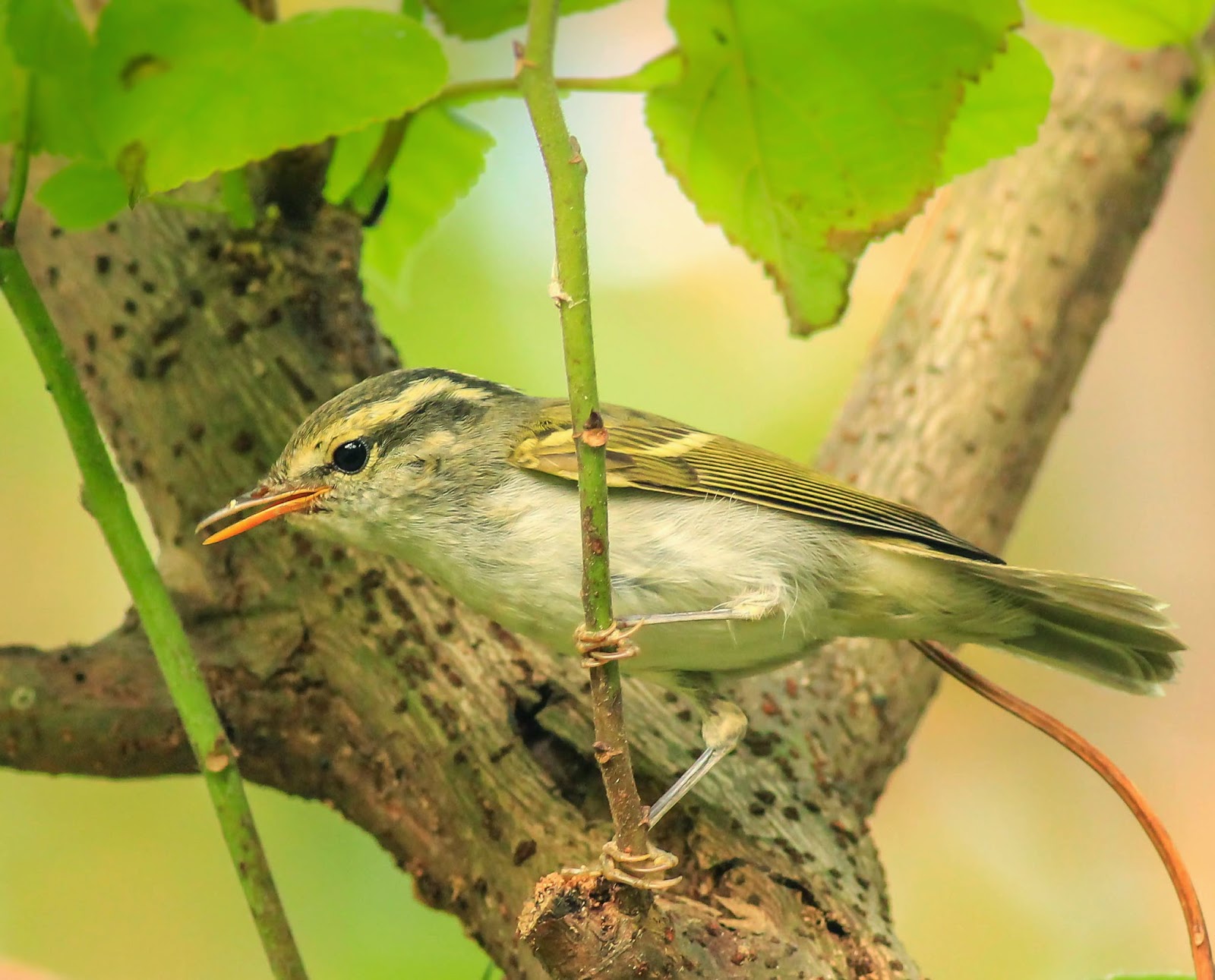"Blyth’s Leaf Warbler" complex has
been split into 3 very similar species: P. reguloides (Blyth's
Leaf Warbler), P. claudiae (Claudia's Warbler) and P.
goodsoni (Hartert's Leaf Warbler). This group represents an ID puzzle. It
is is extremely difficult and usually
impossible to tell them apart in the field solely
by their plumage - especially without the use of a camera - and don't
count on the field guides to be of much help. Some interesting
informations about diagnostic features can be found on online forums or blogs, but their reliability is
open to question. Nevertheless, everyone bring his piece to the puzzle, that's
good!
"Blyth’s Leaf Warbler" cf P. claudiae
During migration passage periods, I try my best to get as more as possible good shots of "Blyth’s", with the hope that one day a consensus will emerge on the reliable diagnostic plumage features – likely to be very subtle, so photo quality is essential.
"Blyth’s Leaf Warbler" is a quite common passage migrant at Hanoi but this autumn has seen a veritable
influx of this bird. Actually it is certainly the phyllosc I encounter the most in my city patches. It’s very likely to be Claudia's Warbler,
which is the "Blyth’s" passing at the same time through Thailand (identification
generally admitted but, according to Phil Round, not yet confirmed through DNA). P. reguloides and P. goodsoni (ssp. fokiensis) are not to be
excluded in the city, but more likely as altitudinal migrants, in smaller numbers and later in the season.
"Blyth’s Leaf Warbler" cf P. claudiae
This phyllosc has a very characteristic
foraging style. It often climbs up and down tree-trunks, explores vertical and
horizontal branches, like Nuthatches or Tits, including tips of twigs and leaves like
the other phylloscs.
I thought that this behavioral trait was sharing by all the species of the Blyth’s complex, but in his website, in a post about Blyth’s/Claudia’s/Davison’s, Ayuwat Jaerwattanakanok explains that the Blyth's Warbler P. reguloides (ssp assamensis) doesn't climb along tree-trunks and branches like Claudia's mostly do. It feeds pretty much like a ‘normal’ phyllosc, by hopping from twig to twig looking for small
bugs among the leaves. Interesting!
"Blyth’s Leaf Warbler" cf P. claudiae
"Blyth’s Leaf Warbler" cf P. claudiae. Because of its foraging style it often appears long-necked.
"Blyth’s Leaf Warbler" cf P. claudiae
"Blyth’s Leaf Warbler" cf P. claudiae
Shots of the undertail pattern showing the narrow white edge to outer tail-features (broader in P. reguloides).











Wonderful study Sebastien!
ReplyDeleteCheers,
Richard
Thanks Richard, but that’s just a very modest contribution to this ID puzzle :p
ReplyDeleteIt’s a bit frustrating not to be able to identify this phyllosc! At least, we have an hypothesis. True or not, the future will tell.
Time to start recording their calls!
ReplyDelete